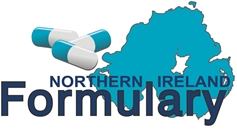(Click here for creams)
(Click here for other formulations including urea and antimicrobial)
Ointments
Creams
B = can be used as bath additive
S = can be used as soap substitute/ body wash (consult individual product literature)
Prescribing Notes
- There is no evidence that any one emollient is better than another but there is wide inter-patient variability in response to treatments. The emollients of choice are therefore the least expensive ones that are effective, which the patient finds acceptable and is prepared to use
- Ointments should be used for dry skin and chronic eczema. Creams should be used for acute inflammatory eczema
- Emollients should be applied as liberally and frequently as possible. They are best applied when the skin is moist but they can, and should, be applied at other times as well. Ideally, emollients should be applied every 4 hours or at least 3-4 times daily
- Emollients should be prescribed in appropriate quantities. Table quantities are based on twice daily application
- Emollients should be applied in the direction of hair growth
- Emollient bath and shower preparations are not recommended for use due to a lack of robust evidence of clinical effectiveness.
- Many standard emollients (creams and ointments) can be used as a soap substitute / body wash. See 13.2.1.1
Cautions
- CAUTION – there is a fire hazard associated with emollients. The risk is greater when they are applied to large areas of the body, or when clothing or dressings become soaked with the emollient. Warnings about the risk of severe and fatal burns extend to all emollients whether they contain paraffin or not. Advise patients who use these products not to smoke or go near naked flames, and warn about the easy ignition of clothing, bedding, dressings, and other fabric that have dried residue of an emollient product on them. Resources available to support safe use include MHRA Drug Safety Update Dec 2018 and MHRA Safe Use of Emollient Guidance July 2020.
- Avoid contact around the eyes
- Epimax ® Ointment and Epimax ® Paraffin-Free Ointment can harm the eyes -do not prescribe these ointments for use on the face. Tell patients to wash their hands and avoid touching their eyes after using these products – see MHRA.
Other formulations
- Emollin® spray is higher cost but may have a role for those who have difficulties reaching certain areas e.g. the back, or where skin is very sensitive to touch
Urea containing formulations
Prescribing Notes
- Products containing urea should not be used unless simple emollients have been tried unsuccessfully
- Urea products are useful in patients with particularly dry skin, hyperkeratotic scaling and ichthyotic conditions
- Urea may cause stinging and irritation for some people
Emollients containing antimicrobials
S = can be used as soap substitute/ body wash (consult individual product literature)
Prescribing Notes
- Preparations containing an antimicrobial should be avoided unless infection is present or is a frequent complication. Use should be targeted and short-term. Avoid adding to repeat prescription and revert to non-antimicrobial containing emollient once condition is controlled
